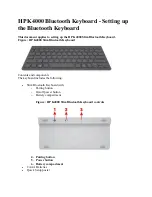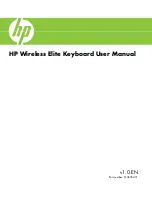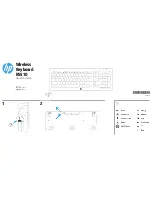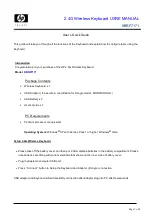
26
MASTER MENU
note is released, the envelopes will not be
retriggered (legato). Mono mode is
particularly useful with alternate control-
lers such as MIDI guitars, etc.
ID number
This function allows an external program-
ming unit to distinguish between mul-
tiple Classic Keys units. In the case of
multiple Classic Keys units, each Classic
Keys should have a different ID number.
Note:
E-mu products Proteus, Proteus
FX, Vintage Keys and Classic Keys all use
product code 04 to maintain preset
compatibility. If you are using more than
one of these units in your MIDI setup, set
each unit to a separate ID to differentiate
each unit.
MIDI MODE ID
Omni 00
MIDI MODE CHANGE
This function selects whether or not MIDI
mode change commands are accepted or
ignored when received over MIDI (see
MIDI Mode).
MIDI MODE CHANGE
Disabled
MIDI OVERFLOW
When on, if you play more notes than
Classic Keys has channels (32), the
additional note data will be directed out
the MIDI Out port to a second Classic
Keys or other MIDI device. MIDI Overflow
can be turned On or Off.
MIDI OVERFLOW
Off
GLOBAL VELOCITY CURVE
Incoming velocity data can be modified by
a velocity curve in order to provide
different types of dynamics in response to
your playing or to better adapt to a MIDI
controller. This function allows you to
select one of the four velocity curves or
leave the velocity data unaltered (off).
Global velocity curve only affects presets
which have their individual velocity curve
set to global. For more information on
the velocity curves, see page 58.
GLOBAL VEL CURVE
4
MIDI MODE
This function selects one of the four MIDI
modes and the MIDI system exclusive ID
number.
Omni mode
Classic Keys responds to note information
on all MIDI channels and plays the preset
currently displayed in the main screen.
Poly mode
Classic Keys only responds to note
information received on the currently
selected MIDI channel (on the preset
selection screen) and plays that channel’s
associated preset.
Multi mode
Classic Keys responds to data on any
combination of MIDI channels and plays
the specific preset associated with each of
the MIDI channels.
Mono mode
Classic Keys responds to data on any
combination of MIDI channels but plays
each channel monophonically. If a new
note on a channel is played before the last
WARNING! WHEN
TRANSFERRING SYSEX
DATA FROM ONE
CLASSIC KEYS TO
ANOTHER, THE ID
NUMBERS OF BOTH
UNITS MUST MATCH.
UNLESS YOU ARE USING
MULTIPLE CLASSIC KEYS
UNITS IT IS BEST TO
LEAVE THE ID NUMBER
SET TO 00.
Summary of Contents for Classic keys
Page 1: ......
Page 9: ...7 Classic Keys INTRODUCTION ...
Page 10: ...8 INTRO CONNECTION INSTRUCTIONS ...
Page 17: ...15 Classic Keys BASIC OPERATION ...
Page 18: ...16 BASIC OPERATION ...
Page 23: ...21 Classic Keys MASTER MENU ...
Page 24: ...22 MASTER MENU ...
Page 33: ...31 Classic Keys EFFECTS SECTION ...
Page 34: ...32 EFFECTS SECTION ...
Page 51: ...49 Classic Keys PRESET PROGRAMMING ...
Page 52: ...50 PRESET PROGRAMMING ...
Page 64: ...62 PRESET PROGRAMMING ...
Page 65: ...63 Classic Keys EDIT MENU ...
Page 66: ...64 EDIT MENU ...
Page 81: ...79 Classic Keys STEP BY STEP ...
Page 82: ...80 STEP BY STEP ...
Page 89: ...87 Classic Keys REFERENCE SECTION ...
Page 101: ...REFERENCE SECTION 99 Drawbar Diagrams ...
















































